


222 sailors from 20 countries competed in the 5.3 class and 45 in the 4.2 class.
5.3 sailors were divided into 3 fleets, Yellow, Blue and Red, for qualifying. There would be 3 starts one for each fleet and the order of the colours would change after each completed race. The fleet sailors were in would be changed daily to ensure that all sailors raced against each other. After 4 races, or 3 days racing they would then be separated into Gold, Silver and Bronze for the championship races. Up to 15 sets of races could be run. There should be a minimum of 4 races for qualifying and 1 for the championship.
The Race officer was John Parish, an Australian with world championship and Olympic experience There were 4 members of the jury from 4 different countries (England, China, Norway and Portugal)
The week was frustratingly dominated by very light and variable winds. The temperature was low to mid 30’s with high humidity and frequent heavy showers.
Samuel was given 191 for the event, a new sail and a Topper from Beijing Sailing Club (BSC), number 48329. The boat was in good condition and just needed a few scratches cleaned up on the hull and screws tightening. Samuel took his own controls, so we fitted his kicker and main sheet added some bungee to the outhaul and tidied up some of the lines.
Samuel was a member of the 30 sailors in the GB coaching squad. Their coaches were Charlotte Bonelli and Curtis Mearns. The intention was to have a few hours on the water and hold some practice races. Unfortunately a Typhoon was passing about 100 miles south of us and the Coast guard wouldn’t let anyone sail. Instead the sailors had a briefing that covered the format of the event and how to manage light winds.
For the opening ceremony sailors paraded by country along the marina and into the main hanger. Presentations were given by Roger Proctor (son of Ian who designed the Topper), Andy Millington the President of the International Topper Class Association (ITCA), and Bill Brassington its Commodore.
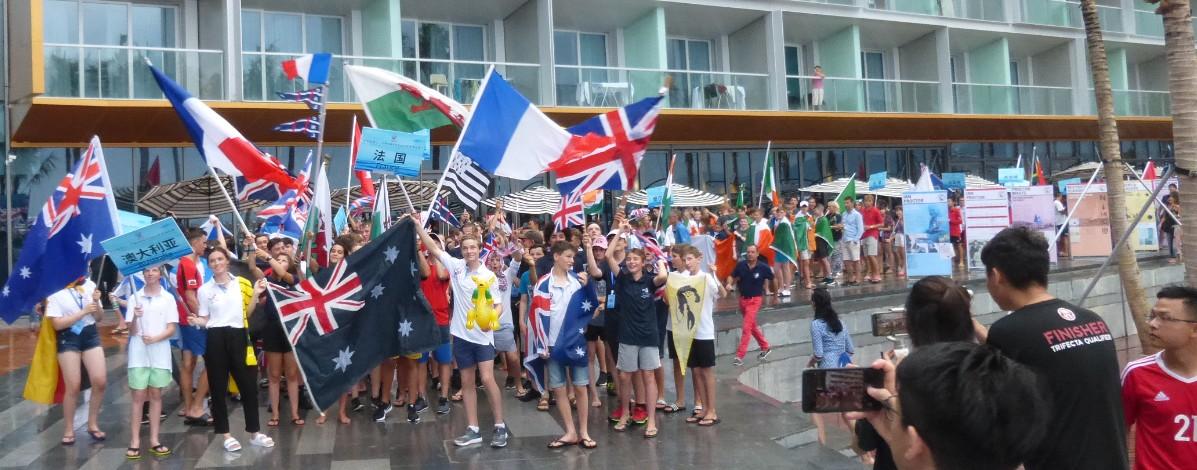
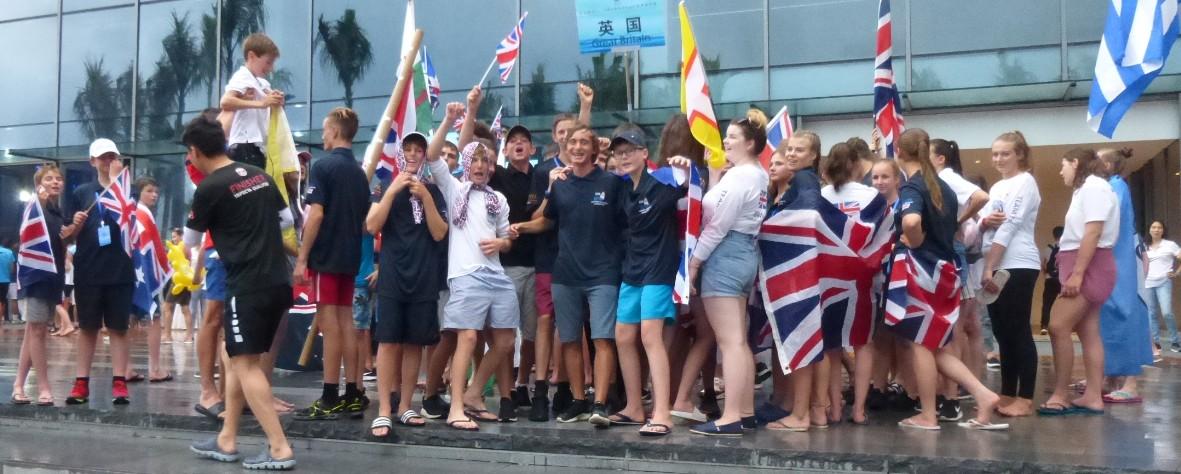
Each racing day started with a briefing by the Race Officer at 10:00, covering his goals for the day. Then the Jury would explain some finer points of the rules that needed clarifying from the previous day’s racing. This was followed by a briefing from the coaches for the squad. As the wind was so light on most days the first flag up was AP over class flag, for indefinite postponement. That would be lower when the race officer felt that the wind was coming, the beach master would tell the sailors to tally and the D flag would be raised for launching.
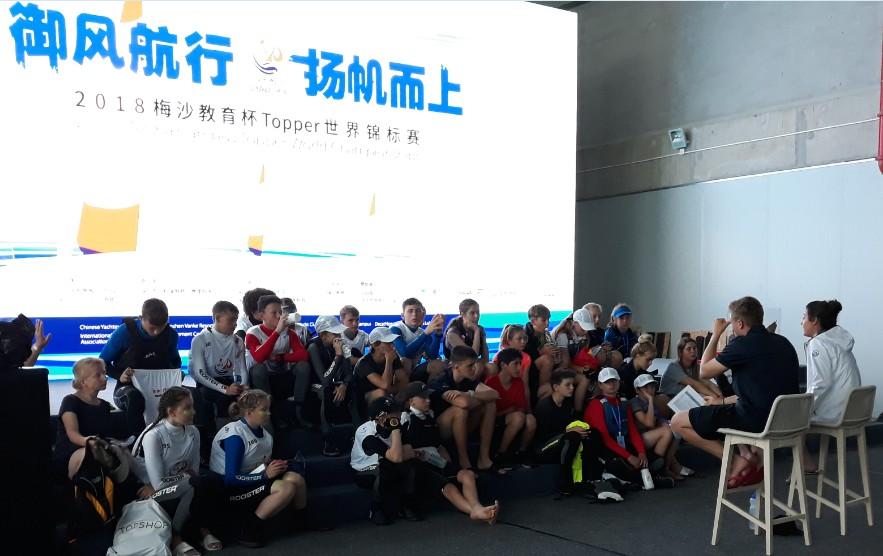

Sailors launched soon after briefing. One race was started, yellow fleet, got off after a General Recall under a Black Flag. The current was pushing boats over the line. Samuel in Blue was in the second start. He opted for the Pin end to get space and clean air. Most boats spent the last 3 minutes of the start over the line. They had a general recall too. The wind changed direction then died before the race was able to be restarted. Yellow fleet’s race was abandoned before they reached the windward mark. The sailors stayed out on the water for another two hours waiting for the wind to fill. The Race Officer then hoisted AP over A. No more racing today.
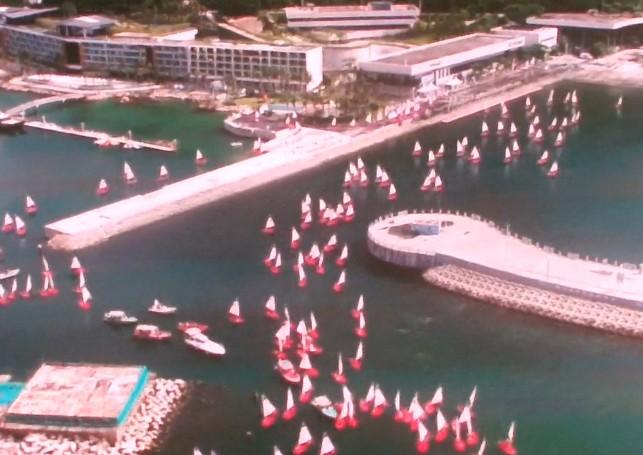
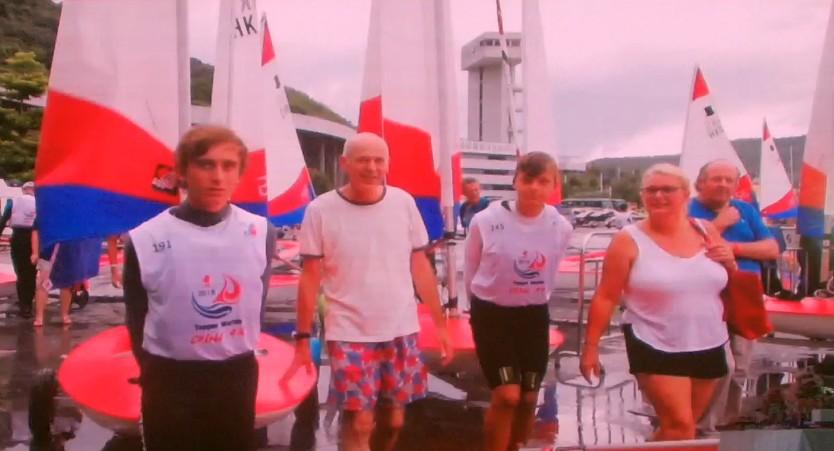
Samuel was still in Blue fleet as no races were completed on the first day. The Race Officer managed to get a full set of 3 races completed.
In Blue fleet the sailor upwind of Samuel managed his trigger pull first taking Samuel’s wind so he had to battle with other sailors for space and air. Blue fleet sailors soon caught up with the slower boats from yellow fleet which made the air confused and navigating around slower boats was difficult. Samuel finished the race 17th, which put him 52nd overall. After protests had been heard he had moved unto 48th.
During the day the cockpit of Samuel’s boat filled with water, we guessed that the self bailer was somehow letting water in but couldn’t for out how, so replaced the unit.
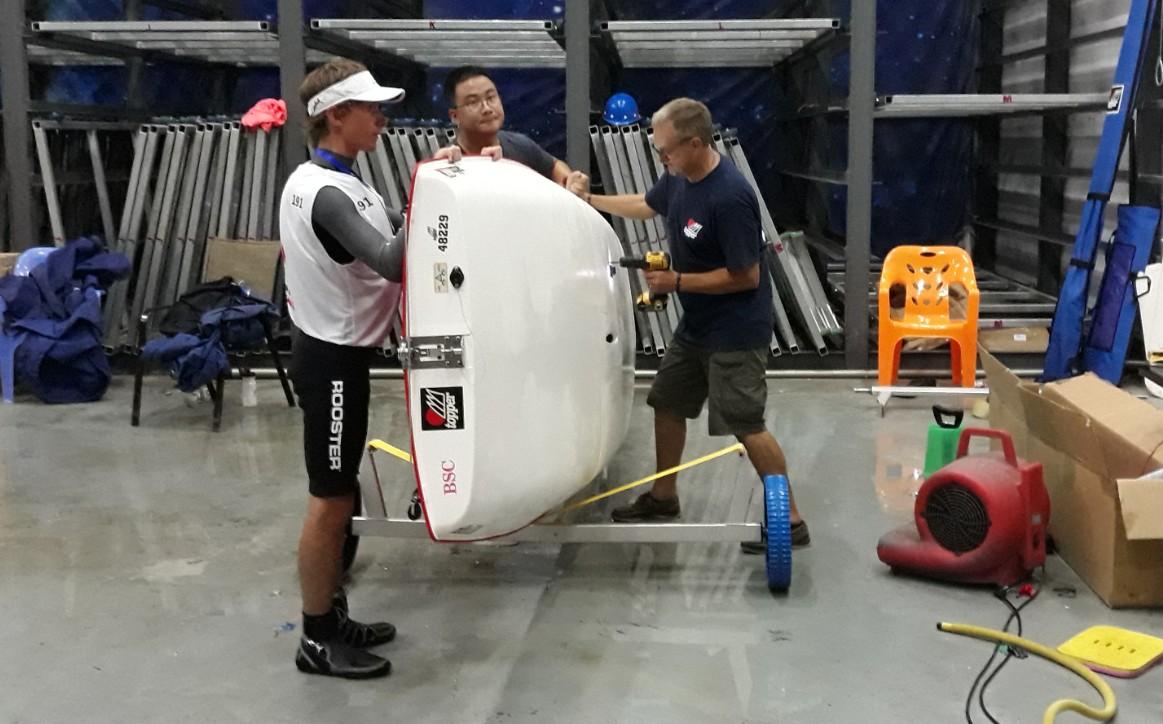
Samuel was put in yellow fleet. He could benefit from a first start but would miss the opportunity to see which end of the line paid but watching an easier fleet. The sailors launched weren’t able to race so were brought in to save time on the water and enable a longer sailing day. The wind filled in as they returned to shore. It took and hour to get them tallied off and tallied back on again. By the time they were back at the start line the wind had died again. Many of the boats had to be towed back in by the ribs.
The new self bailer was doing it’s job Samuel came in with a dry cockpit.
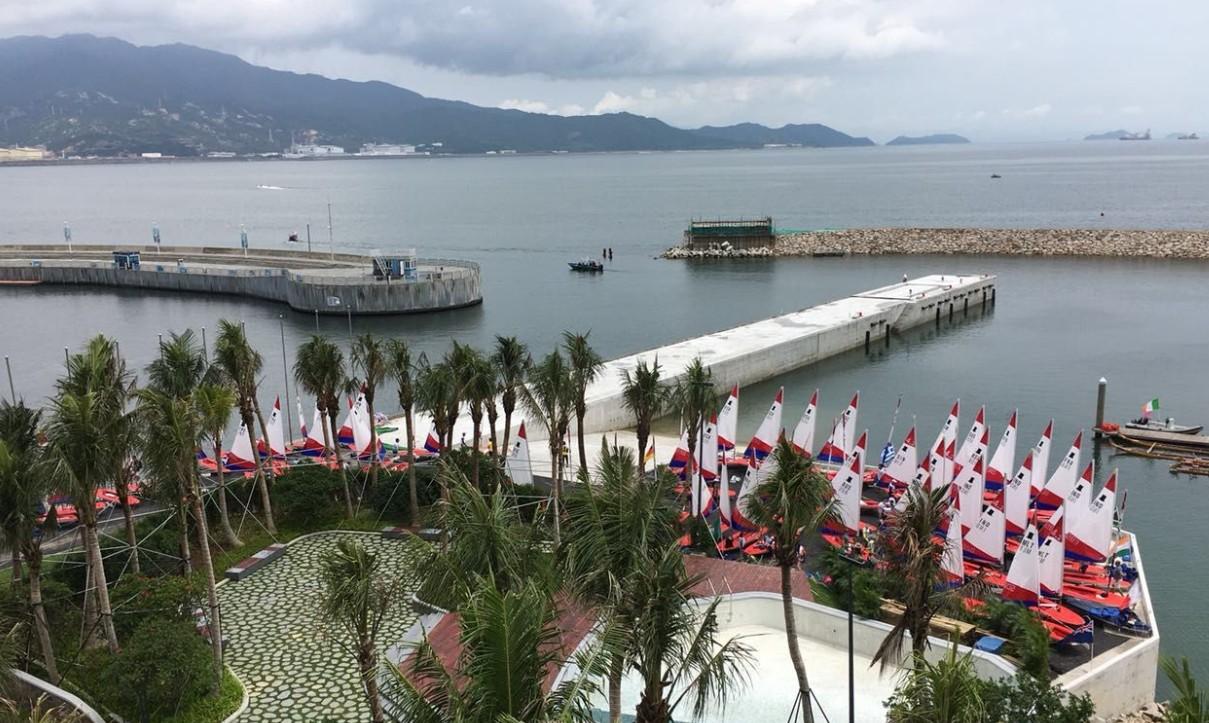
To improve the probability of getting races completed the race officer shorten the course to a trapezoid and increased the time between flights to prevent boats catching up with each earlier flights.
Samuel was still in Yellow flight so could race without getting caught up in the tail end of the previous flight. His start was better, but on a sea where the wind could be change direction and speed without warning he went left and the wind shifted right. Samuel finished 20th out of 74.
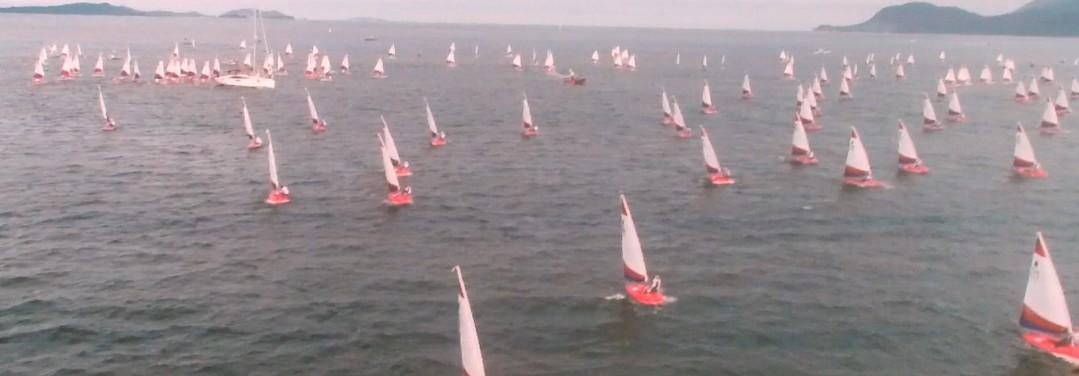
The sailors were held ashore in the hope that wind would come and they could make the most of an afternoon breeze. They would need to get 2 completed races in to enable a championship race to take place on Tuesday. By 15:30 the wind hadn’t filled and if it did at that point there wouldn’t be enough time to complete 2 races for each flight. The Race officer then hoisted AP over A and called an end to the event.
From the two complete races the sailors were divided into Gold Silver and Bronze fleets. Samuel was in Gold Fleet and finished 40th overall. The event winner was Tom Peacock (GBR) from Parkstone Yacht Club, Second was Hugh O’Connor (IRL) from the National Yacht Club of Dun, Laoghaire, County Dublin, and in third place was Aaron Evans (GBR) from Silver Wing Yacht Club. 4.2 class managed to get five races completed. The first two sailors were from China and the tired from Taiwan. The first British sailor was Tom Thwaites in 7th place from the Royal Norfolk and Suffolk Yacht Club.
Ironically an hour after the end of the closing ceremony there was a steady 10 knots blowing across the course area. It continued to blow from the same direction for most of the afternoon. Two completed races in light and variable winds made the 5.3 event as much a lottery as a skill. The sailor who won the National series in Great Britain this year came 52nd overall here at the World Championships. It was above all a test of patience whether waiting on land to launch or on the sea for a course to be set and a start sequence to be completed.
Beyond sailing the event has bought the Team GB sailors closer together, we’ve made friends with Topper sailing families from around the world and learnt a lot about China. We have also of course greatly improved our skills with chopsticks.
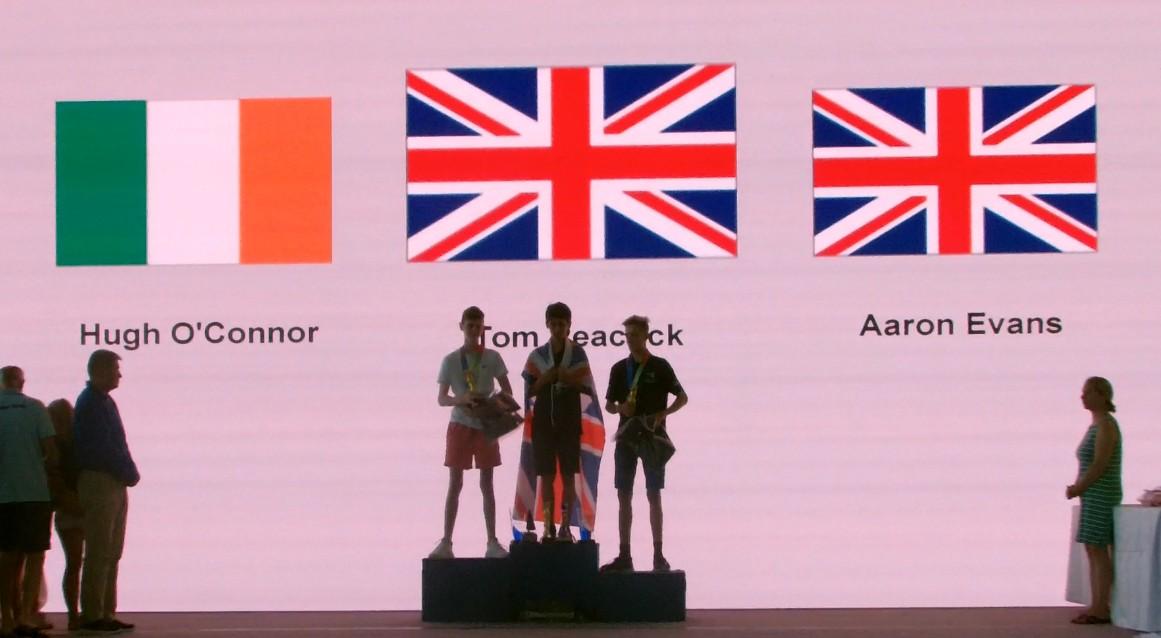
Samuel joined Broxbourne sailing club when he was 7 and was too scared to sail from the bank to the pontoon. Coaching and inspiration from Broxbourne Sailing Club has helped him to become a competitive sailor at Regional, National and now International levels.
He won the Eastern Region Traveller series in 2016 and was unbeaten in 2017, but didn’t compete in enough events to win the series., and he was 12th overall in the 2017/2018 National Series.
Samuel has benefitted from an EFDC sports award, a travel grant from the event organis- ers in China, a very generous gift from BSC and support for clothing from individual BSC members. He is very grateful for all the support, financial and coaching, that he has received.
National Series 1 for the 2018/19 National series is at Marconi, near Maldon, on the 8th
and 9th of September. In 2019 the National Topper Championships will be in Largs and
the worlds in Holland.
It would be great to see some BSC sailors venturing out. There are some lovely sailing
clubs in the Eastern Region who are always happy to see new sailors at Topper Travel-
lers. The next Eastern Region Traveller is at Stewartby (near Bedford) on the 22nd Sept
and there is an Open at Norfolk Broads Yacht Club on the 15th Sept. Check this link for
details
https://www.itca-gbr.co.uk/area-pages/eastern/racing/